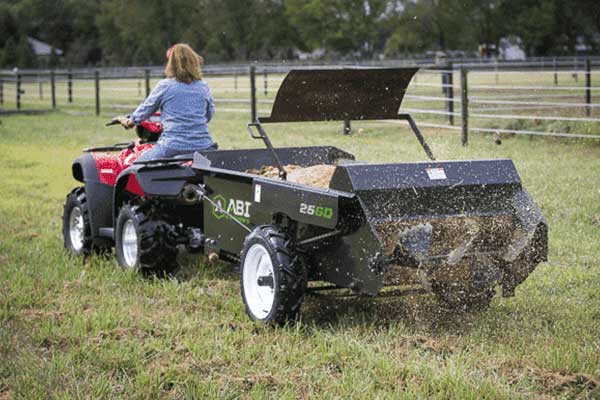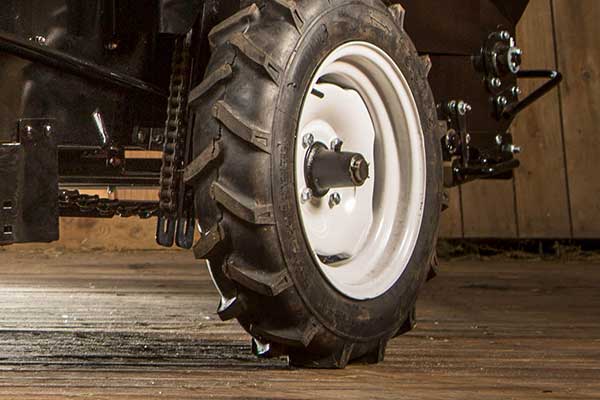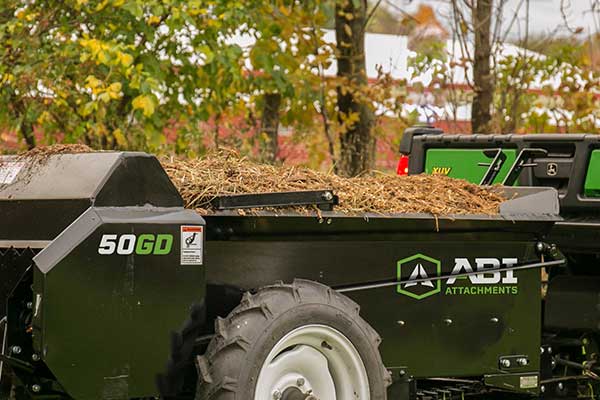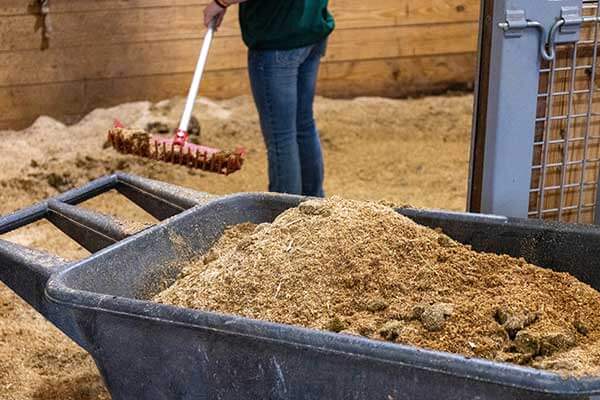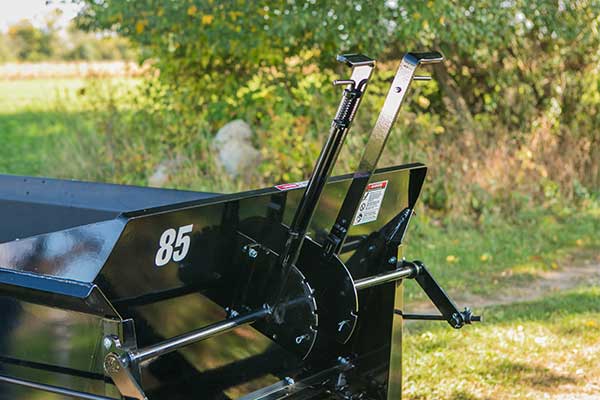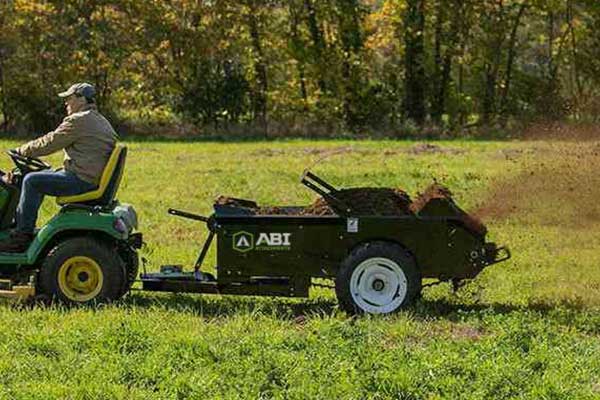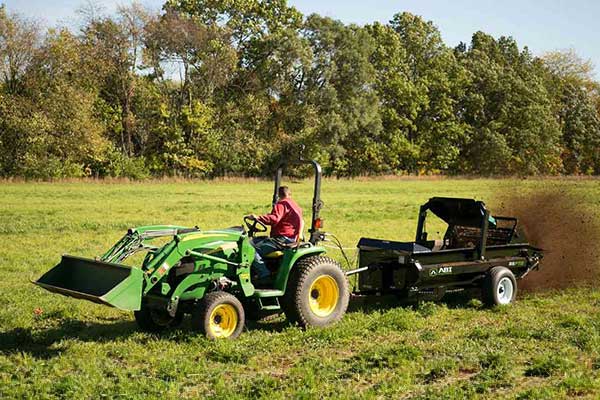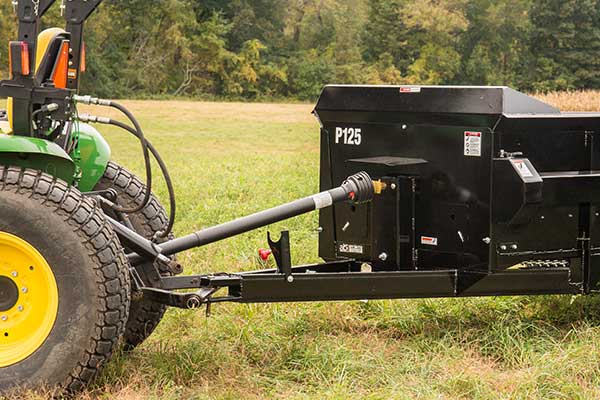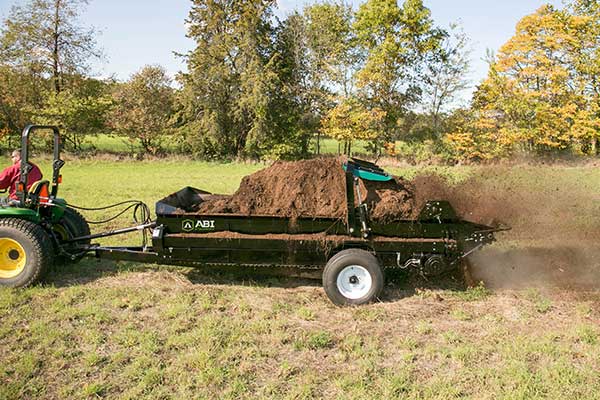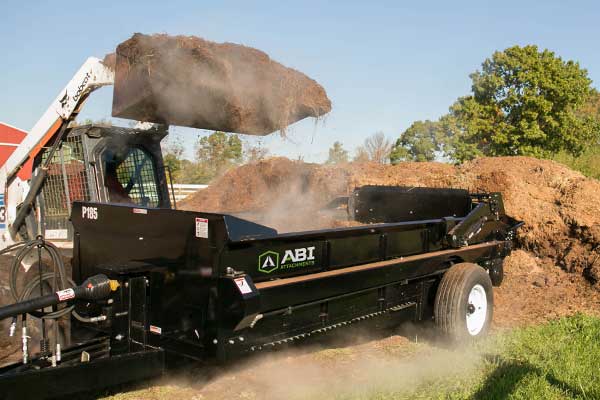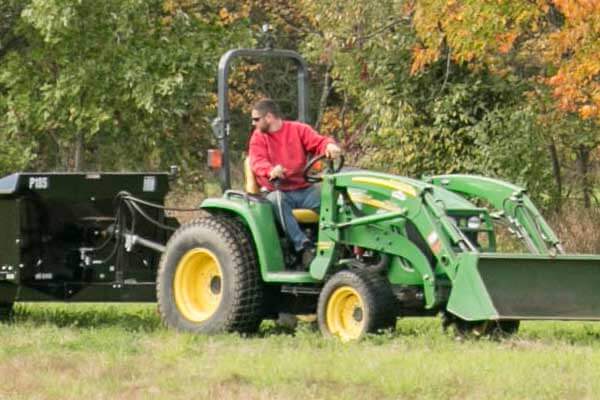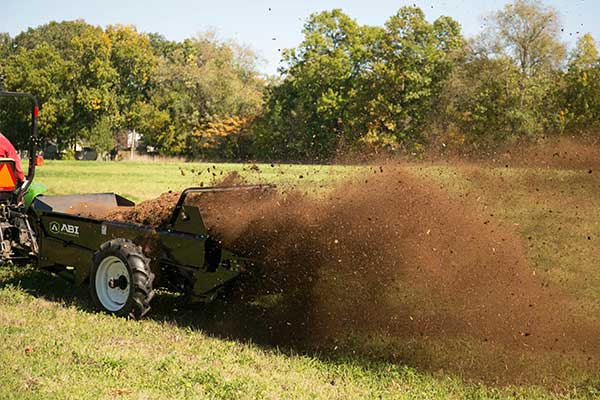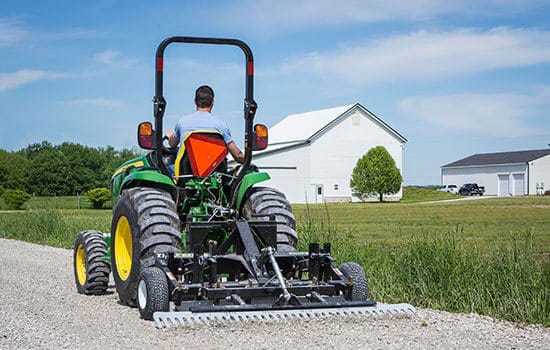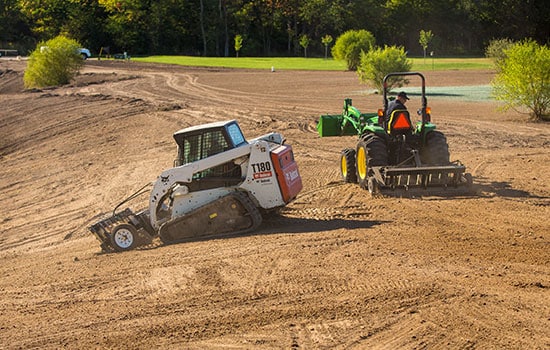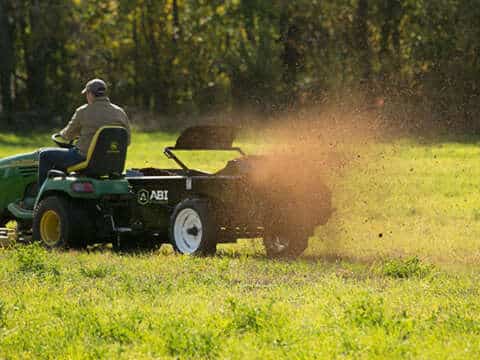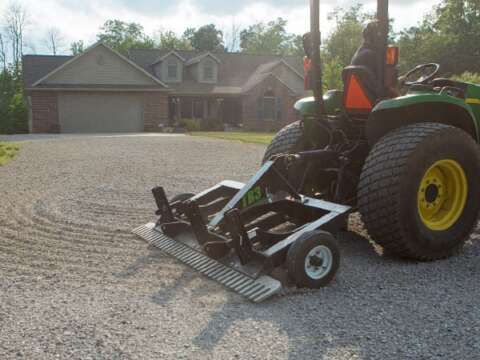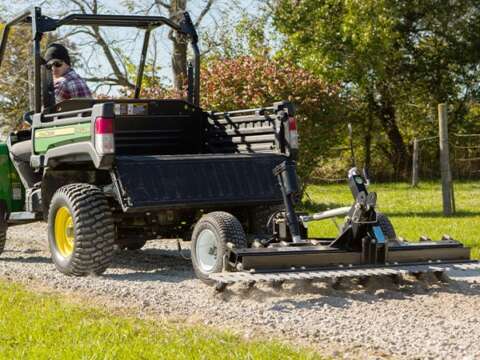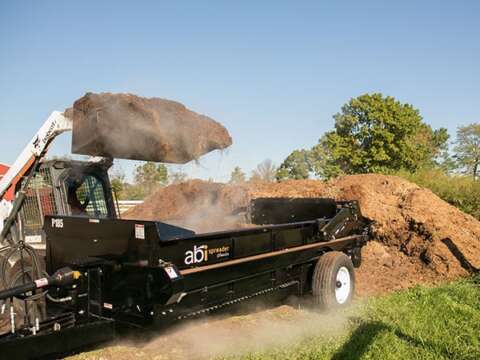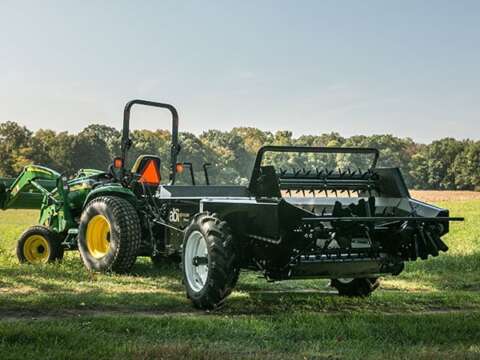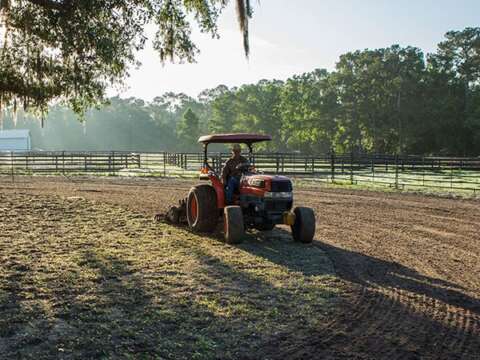Hi everyone, Matt here with ABI Attachments. Welcome back to another episode of “The ABI Dirt.” Today on “The Dirt” we are wrapping up our four-part mini-series on Manure Management 101. So over the past couple of weeks, you know that we have talked about manure management plans, how do you handle all of the poop that is now on your property? Whether you’ve been doing it for years and you needed a refresher course, or maybe you’re new to having animals on your property. We’ve also talked about specific design features that you can be looking for in some really high quality manure spreaders. We’ve talked about what size of spreader is right for you. How do you know what size of spreader is right for you? Today, we want to jump into a question we get often, which it’s a crucial question between two different kinda subcategories of manure spreaders. And that’s the difference between a ground drive and a PTO model. If you’ve been looking at a compact manure spreader for any amount of time now, you know that both of those options are available. Many manure spreader manufacturers make both kinds, but what’s the difference and what is best for you in your context? Let’s talk about that.
Here we are with two of our 50 cubic foot capacity manure spreaders, one of them is ground drive and one of them is PTO. For those of you who are new to the concept of a ground drive spreader, what makes a ground drive spreader work is the contact with the ground. Once you engage the ground drive components as the tires move along the ground, the tires are in contact with components along the axle, which are connected to components further back on the manure spreader, which make everything go, which make everything move. So the actual spreading of the manure, the movement of the web chain or the floor chain across the bottom of the spreader that pushes the manure to the back of the spreader, all of that is dependent upon the tires moving as the manure spreader is rolling forward. A PTO manure spreader, on the other hand, doesn’t worry about the tires being in contact with the ground as long as the PTO shaft, connected to the PTO components on the manure spreader, as long as that shaft is connected up to your tractor’s power takeoff system, it will work just fine.
So that brings us to one of the most obvious differences between the two, is the kind of tow vehicle you need to operate the manure spreader. Because the PTO manure spreader uses your tractor’s power takeoff system, you must have a tow vehicle with a power takeoff system. That means you’re working with at least a subcompact tractor, utility tractor, compact tractor, you need a tractor with a power takeoff system to make a power takeoff manure spreader work. Whereas your ground drive manure spreader can be pulled by a lot of different things. You can have ATV, UTV, even a large garden tractor, for those of you with enough horsepower and a heavy enough tow vehicle, could potentially make the ground drive spreader work. That’s not to say it doesn’t work just fine with a tractor. You can use a tractor to operate a ground drive manure spreader, you just don’t need the power takeoff system. Now when it comes to size differences between these two types of spreaders, it’s really common to find comparable sizes across the board. The only difference would be is that typically you can find a smaller size in a ground drive model.
So for example, here at ABI, we’ve got a 25, 50, 65 and 85 ground drive unit. Whereas our PTO units, the smallest one starts at 50 then jumps up to the 85, 125 and 185. So depending on what tow vehicle you’ve got, and again if you’re using a tractor for PTO, you’ve got a PTO in your tractor, you can probably get the bigger size to handle the larger capacity of manure, whereas, if you have an ATV, UTV, a Gator, a side by side that you like to use to spread manure, you don’t have the PTO, which means a 25 may be enough to get the job done. But that was in previous episodes, we talked about the right size of spreader for you. That brings us to loading. If you’ve got a smaller profile in the ground drive unit, typically these units are loaded by hand. If you’ve got a ground drive spreader, usually you’re rolling it through the barn, you’re loading right outta the stall, you’re mucking the stalls into the spreader, and you’re headed right out to the pasture. Where because your PTO models can size up to much larger sizes, you’re most likely loading with your loaders, skid steers, tractors, loader buckets of some kind.
Keep in mind though, since we’re talking about loading right now, if you have one tractor, just one on your property, and that tractor has your loader bucket and has a power takeoff system, and you say, “Well, perfect. I need a PTO spreader because I’ve got a tractor with a PTO and a loader, that’s what I need.” That’s fine, but if you’ve got your tractor disconnected from the manure spreader and then you load the manure spreader, then you need to take that same tractor to connect to the manure spreader, go spread, because you have to have the PTO, right, on that PTO spreader, then when you come back to the pile, you need to disconnect your manure spreader to use your tractor to reload the manure spreader. So if you’ve got only one tractor or one loader bucket on your property and you really wanna use that loader bucket, let’s say you compost as your manure management plan and you’ve got a big ole honking pile of stinky poo out in the backyard that you need to load up twice a year, and you only have one tractor, one loader bucket, one PTO shaft, PTO may or may not be the right choice for you, there just may be a lot of connecting and disconnecting you have to go through.
That also then leads us onto unloading. Because the ground drive requires motion, the tires have to be moving along the ground in order to spread it, if you have that big ole manure stinky manure pile out back, and you like to turn that manure and you want to make sure you’re maximizing the composting abilities there, the benefits of composting, and you just wanna pile here and then load it up to a spreader and run that spreader and create a new pile right beside it, that’s not possible with the ground drive unit, because you’ve got to keep that spreader moving. So ground drive units are ideal for situations that you’re getting out to the pasture and you’re spreading it on the regular. If you’ve got a big ole pile and you want to compost and then turn it, you need to have a manure spreader that can sit still, hook up to the PTO drive of your tractor, turn that PTO on with the manure spreader sitting still and it can just spread out the back end. That’s the best way to turn a compost or manure pile.
Two more things to consider between these two models. First up are the ground conditions. If you are regularly spreading in wet and muddy and icy and snowy conditions and you don’t care what it looks like out there, you just need to get manure out the door, the ground drive unit may cause you a little bit of trouble. Those big ag treads are really gonna dig in to whatever surface you’re in. So if you’ve got a wet pasture out there and you take the big ag treads on this ground drive out there, you could potentially rut some things up. If that matters to you, just be mindful. If that doesn’t matter to you because you’ve got ag tread on your tractor anyway, don’t sweat it. Just be mindful that those tires will dig in thick. Whereas in the PTO unit because it’s not relying on the ground contact, you got radial tires on there, smoother, not gonna rut things up as bad and giving you muddy conditions. Safety is your last consideration when you’re looking at the difference between these two units. Now we’ve got a lot of the guards in this PTO unit taken off so we can poke around a little bit and get your eyes in there, but the PTO unit you do have the PTO shaft connecting the power takeoff system of the tractor to the PTO spreader. That means you’ve got a shaft between the two that is rotating extraordinarily fast speeds. That’s always something to be mindful of. You wanna make sure that when you’re using a PTO spreader, you’ve got nobody in or around the connection point between spreader and tractor when this thing is in use. Whereas on the ground drive unit you can see that the only thing you’ve got up front by the hitch of the spreader are the two levers to engage or disengage the components in the back.
That’s all we’ve got today, everyone. I hope that was a helpful rundown between the ground drive and the PTO model spreader. Remember, if you have any additional questions or if something I said wasn’t quite clear enough for you, totally fine, that’s why we have factory reps. We’re talkative folk around here at ABI. We love to answer any questions you have, give us a call, let us know what you’re working on. Let us know what you’ve got going on on your property and we would be happy to advise and counsel as best we can so you can be matched up with the spreader that you need. And if you’ve stuck with us in the poop and the muck and the manure this long, after four episodes on manure management, and you don’t even have manure on your property, first of all, well done. That’s amazing actually. And second of all, we are going to be jumping over to some different attachments next time we come back on “The Dirt,” so thanks for sticking with us through the mess, and we’re looking forward to seeing you next time. Take care, everyone.

